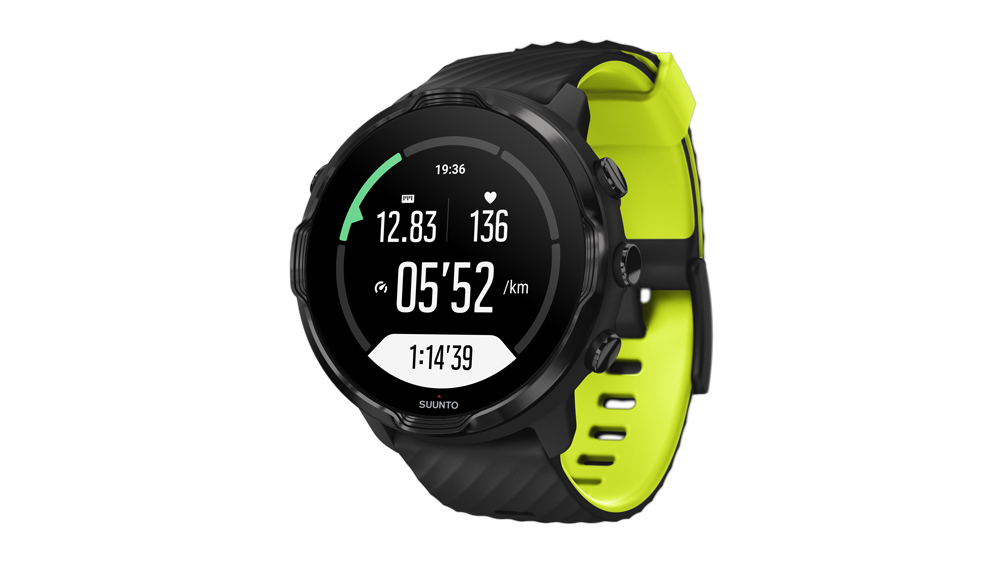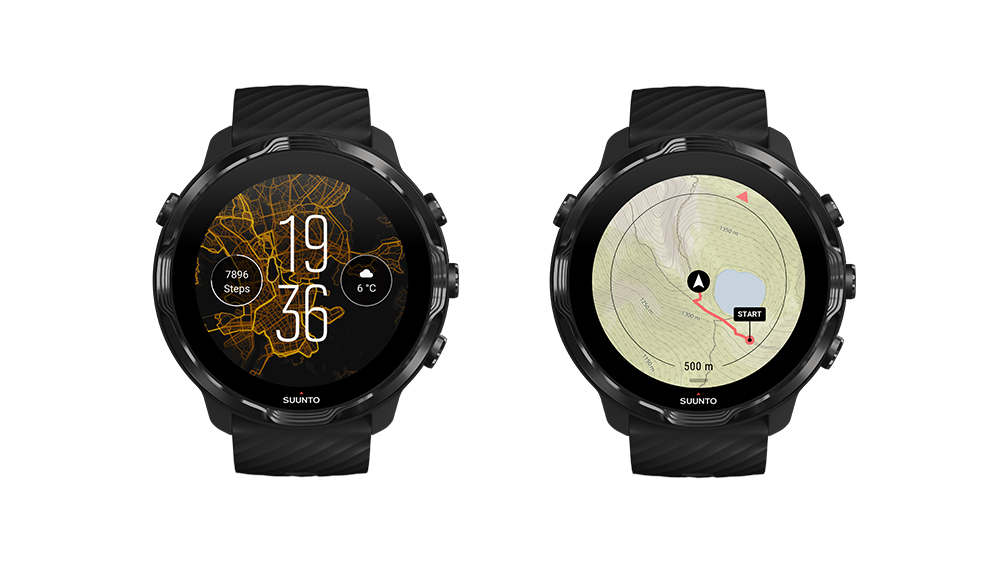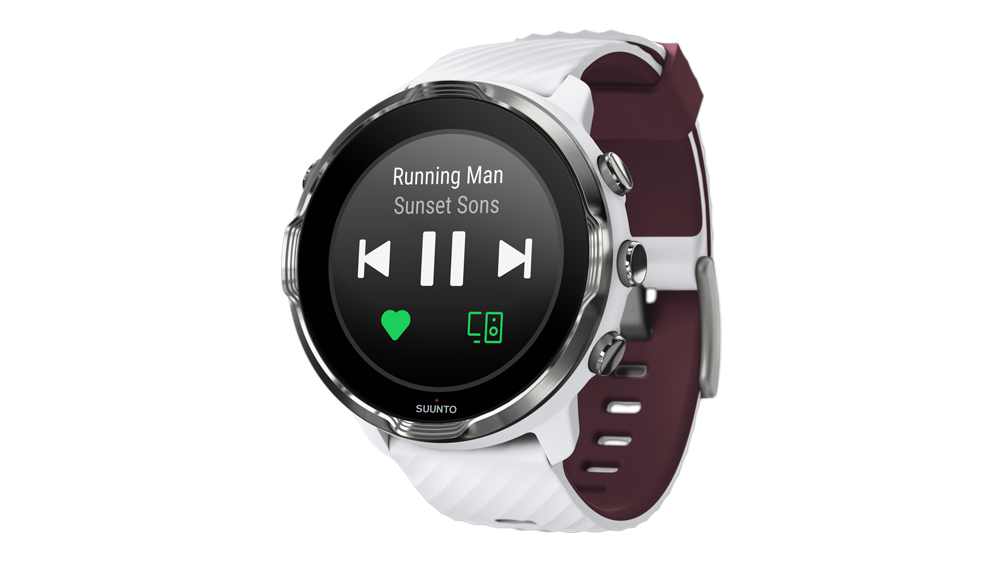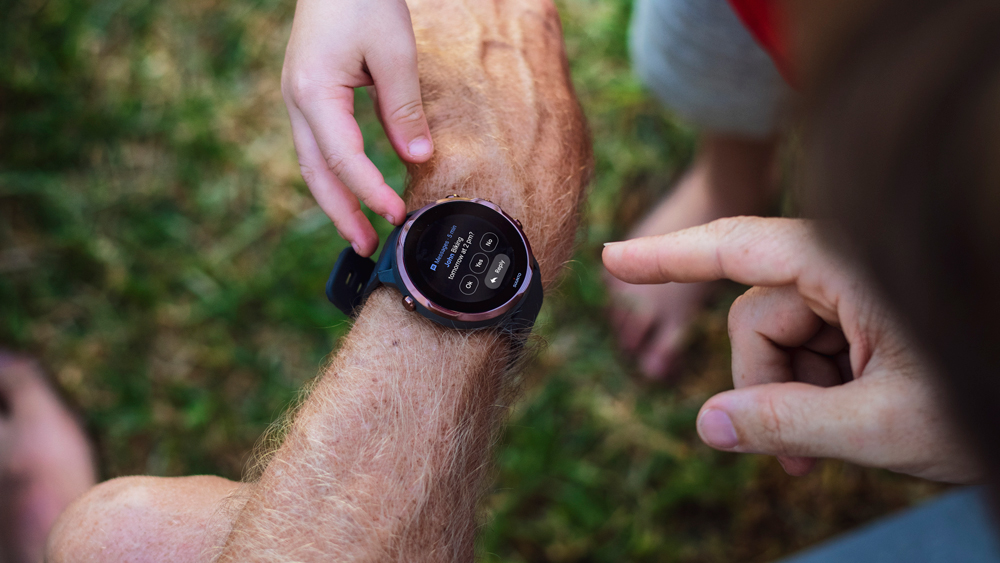Our Verdict
While the Suunto 7 is flawed and falls short of the sports tracking standards you expect from the brand, it does offer a better experience than other Wear OS devices. If you want a proper Android smartwatch and decent sports tracking, it’s your best bet.
For
- Wear OS and Google Play support
- Suunto sports app
- Bright display
Against
- Poor battery life
- Worse tracking than sports watches
- Expensive
You can trust Coach
Activity Tracking With The Suunto 7
In an odd move, all the everyday activity tracking on the 7 is done by Google rather than Suunto. If you log into the Suunto app and head to the steps or calories burned sections you’ll find it blank because no data is sent to the app at all, which is a little unusual considering all the company’s other watches offer activity tracking.
You’ll find your basic activity data in the Google Fit app, and you can set up a widget on the watch so you swipe right from the watch face to see your activity for the day at a glance. Google uses two goals for each day – heart points and move minutes. The former are earned by doing a moderate activity for one minute, while any movement for 60 seconds will net you a move minute. You also get two heart points for undertaking a vigorous activity, which falls in line with the NHS guidelines for activity – one minute of vigorous exercise like running counts as much as two of moderate exercise like walking.
The targets are set at ten heart points and 60 move minutes by default, but you can adjust them easily on the watch. Along with these two targets Google Fit will give you your step count, calories burned and distance covered each day. You cannot set goals for these stats though, as you can on the majority of fitness trackers.
It’s a solid, if unremarkable, offering, but it’s undermined by the heart rate monitor on the watch. Not only was it inaccurate for me during the day as well as when exercising, it also doesn’t take readings often enough to give a useful picture of your heart rate through the day. Although I had Google Fit set to take heart rate readings throughout the day, it often didn’t happen, to the point where I’d have entirely blank weeks. Even when working the monitor takes readings only every 15 minutes, presumably to save battery. This means you don’t get useful stats like resting heart rate with an acceptable degree of accuracy, and also means that heart points were allocated a little generously in my opinion.
For a smartwatch that’s designed to be used all day every day, the activity tracking is a little basic on the Suunto 7. It’s not particularly engaging either, especially when compared with the Apple Watch’s activity rings, which are addictively effective in getting you to hit your goals. The heart rate failings only add to this. While Suunto could get away with undercooked activity tracking on its sport watches, which will be used by people who only really care about their runs, cycles, swims and so on, on a smartwatch like the 7 it needs to be better. Suunto could start by doing it itself, rather than leaving an entire section of its app blank and deferring to the limited Google Fit.
Running With The Suunto 7

As a keen runner, I’ve never been impressed by the sports tracking available on Wear OS watches, so I’ll start by saying Suunto is the best of these I’ve come across so far. However, as someone who has used Suunto’s sports watches in the past, I was still left disappointed by the limited features available on the 7, especially as it seems like Suunto has stripped away basic features that are available on its other watches. The 7 might be a smartwatch aimed at different people, but it costs £429 – you expect a lot for that kind of money.
Open up the Suunto sports app on the watch and you have a section of running modes to pick between: running basic, running race and running interval, with each showing different stats. You might think just one mode for running would do, as long as you can set up the data fields according to your taste, but you can’t customise the data shown so you have to go with one of Suunto’s options. Being able to choose the stats shown during a run is such a basic thing that I find it borderline outrageous Suunto has not included this feature.
Still, you should find a set-up you like from the options given – I tend to use the race mode because it shows average lap pace, which is my preferred stat. Inexplicably, there’s no way to program interval sessions into the intervals mode, either on the watch or the smartphone app. It distinguishes itself, versus the basic mode, by replacing total time and distance and current pace with lap time, lap distance and lap average pace. If you want to run an intervals session, you’ll just have to remember it and use the manual lap button. It’s another basic feature that Suunto has opted not to include. Customisable sports modes and intervals aren’t exactly niche features only on running watches either – they’re available on many smartwatches.
Another thing you can’t do with the Suunto 7 is pair an external heart rate monitor to use with the native sports tracking. That’s annoying, especially since the heart rate tracking was completely useless for me. I didn’t go on one run where it was consistently accurate, so I soon began to ignore it entirely.
I also have doubts about the accuracy of the GPS tracking, because the watch consistently recorded a little more distance than I ran, compared with a watch linked to a calibrated footpod. The same happened to other people I know who have tested the watch. This isn’t really a major problem, just a little curious for such an expensive device.
Despite these criticisms, I still rate the Suunto 7’s run tracking as the best on a Wear OS watch I’ve tried, but that’s down to the quality of the competition rather than the 7 distinguishing itself. The 7 does at least provide a stripped-back version of what you’d get from a proper running watch, which should satisfy casual runners looking for sports tracking on their smartwatch, and there is one stand-out feature, which is Suunto’s maps.

The watch can display heatmaps that show popular routes for different sports taken by other Suunto users. These show as orange lines overlaying a map, with more popular routes brighter. You can see this during a run by swiping to the map screen. It’s a handy way to find good places to run around you, especially when travelling. You can also get a standard map that shows things like landmarks, public transport and shops, which is always useful.
The Suunto 7 will automatically download an offline map of your local area when connected to Wi-Fi and charging. This doesn’t always happen reliably though, and if you’re in a new place where a map would come in particularly handy, you might need to double-check the offline map has been successfully loaded.
The maps feature is well done, but once again there’s a glaring omission, which is that you cannot set and send routes to the Suunto 7 to follow during a run. You can use the maps when running and see where you’ve been during the run, but you can’t follow a breadcrumb trail set up in advance. I’d much rather be able to do that than be continually making decisions about which way to go while running. Again it’s a feature available on other Suunto watches, and many other watches. Perhaps it will be added to the 7 in a future software update, but why it’s not there at launch is mystifying.
Using The Suunto 7 As A Smartwatch
By partnering with Google, Suunto has ensured the 7 can mix it with the best smartwatches, with features like Google Pay, Google Assistant and the Google Play store, which is well stocked with apps. That compares favourably with the smart features on something like Garmin’s multisport Fenix range, which are limited to a few basic apps in the Connect IQ store and Garmin Pay, which is still partnered with very few banks.
There are also plenty of popular third-party exercise apps to pick from in the Google Play store, though I’d say that Suunto’s own sports app is still your best choice with this watch. If you’re not using Suunto’s sports tracking, there’s little reason to get the 7 over another Wear OS option.
You can load music on the watch to listen to when parted from your phone, but only if you have a Google Play Music account – you can’t do this with Spotify for example. You can control playback from other sources on your phone using the watch, but you can do that with most headphones anyway. With Garmin and Samsung watches you can download Spotify music to your watch to listen to offline, so it’s a shame this isn’t available on the 7.

How Often Am I Going To Have To Charge It?
The Suunto 7 falls into line with most smartwatches by offering a day of battery life – two at most. I had to charge it every day, as will anyone else who uses it to track runs or other outdoor activities using the GPS, especially if you set the screen to always-on during those activities.
In the first couple of days the battery was terrible, but it did settle down and I found I’d reliably get through, even when doing long runs of around 90 minutes with the screen set to always-on.
This is obviously a huge difference from Suunto’s sports watches, which last several days between charges even when exercising outdoors every day, but it’s fine for a smartwatch running Wear OS with a large and bright colour touchscreen.
The lack of battery life does mean you can’t really use the Suunto 7 for sleep tracking, which would require a third-party app anyway, because there is no native sleep tracking on the watch.
Where Can I Wear It Without People Laughing At Me?

The Suunto 7 is designed to be worn everywhere and it has an attractive design. You can also swap the silicone strap for something less sporty, like a tasteful leather number. To my eye the design wasn’t too much smarter than Suunto watches like the 9, or Garmin’s Fenix range, but a spot survey of my family revealed that they all thought the Suunto 7 was the most appropriate watch for daily wear.
Should I Consider Buying Something Else?
The Suunto 7 is a big gamble from Suunto, trying to establish the brand in the smartwatch sector after losing out in the GPS sports watch market to Garmin and Polar. It is a good Wear OS smartwatch and it might persuade those who want a useful smartwatch with enhanced sports tracking credentials to buy it, but the high price will put many off, especially if they read about the often frustrating user experience when interacting with Wear OS.
If you have an iPhone the Apple Watch Series 5 has the Suunto 7 beat hands down, especially since it’s cheaper. Even the Series 3 is better in my opinion and that’s just £199 these days. The user experience in general is better and the sports tracking is more accurate.
Compared with its Wear OS rivals, the Suunto 7 does stand out as the most comprehensive sports option, my frustrations with the sports tracking notwithstanding. However, the Mobvoi Ticwatch E2 is much cheaper than the Suunto at £145.99 and while it’s not as good for sports tracking, it does do enough to satisfy the casual athlete. The same goes for the Samsung Galaxy Watch Active 2, which runs Samsung’s Tizen software and costs £269, or £399 for a version with a built-in 4G sim.
The problem the Suunto 7 might have is that its key feature – sports tracking – is done so much better by dedicated sports watches, including those made by Suunto itself. If you’re not so fussed about sports tracking, there are good Wear OS smartwatches available for under half the price of the 7; if you are very fussed about sports tracking, the 7 will frustrate you compared with using a proper sports watch.

Nick Harris-Fry is a journalist who has been covering health and fitness since 2015. Nick is an avid runner, covering 70-110km a week, which gives him ample opportunity to test a wide range of running shoes and running gear. He is also the chief tester for fitness trackers and running watches, treadmills and exercise bikes, and workout headphones.
